The Article
AC-2K Balanced Power Transformer From Air Audio
7th May 2020
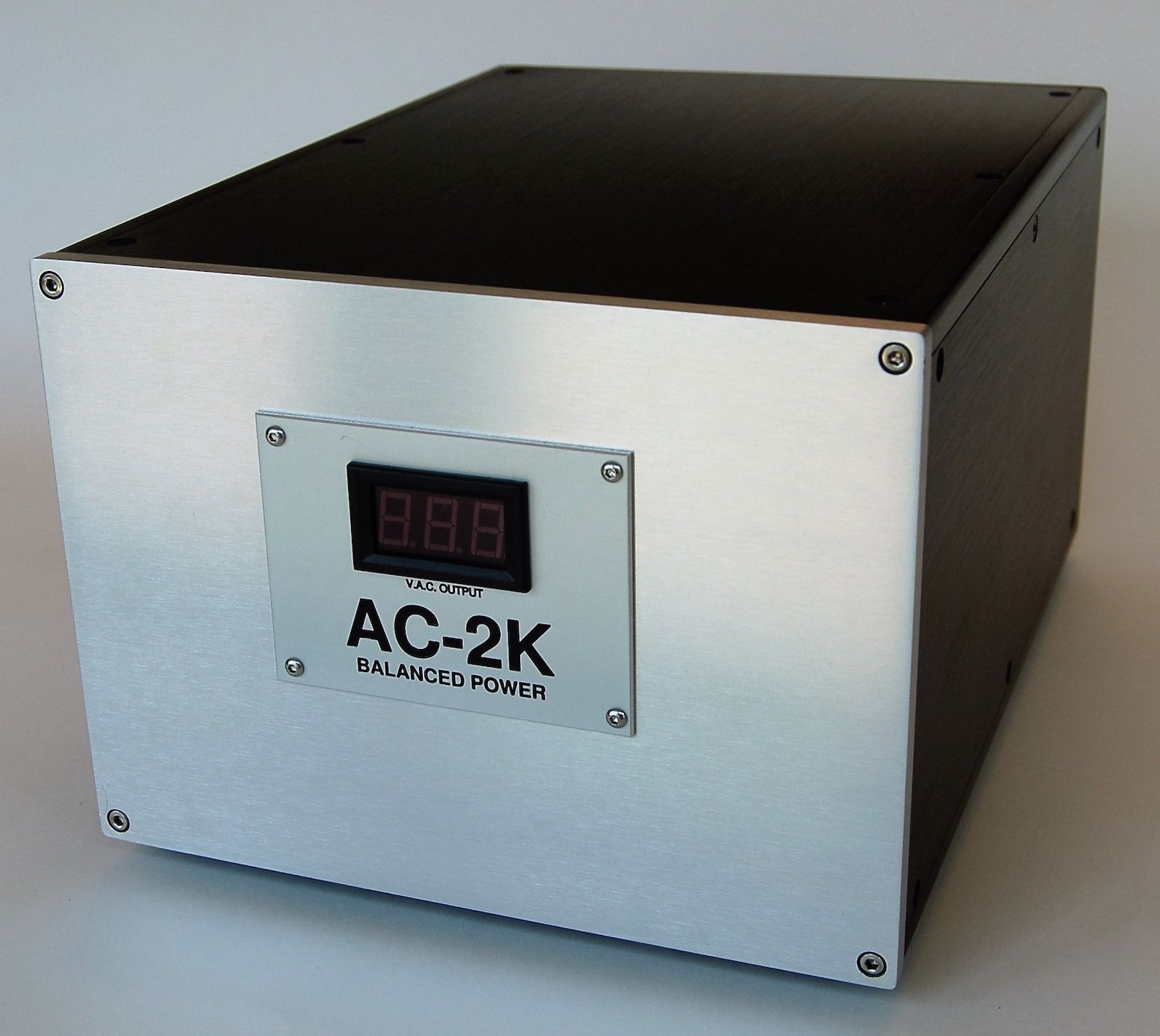
The AC-2K is designed for hi-fi and AV use, Paul Rigby gets to review this weighty product
Looks rather imposing, doesn’t it? So what actually is it? This balanced transformer plugs into a wall socket. Then you plug your normal hi-fi power block into the AC-2K. Hence, the AC-2K sits in the middle, as it where. That’s it. There’s no necessary switches to move or knobs to twiddle (well, there’s one but we’ll get to that). You switch the unit on via the wall socket and its ready to go. You plug it in and forget about it, basically.
It’s job? To lower the noise floor and increase sound quality over the entire frequency spectrum.
According to Air Audio, the unit, “…attenuates power line noise, then eliminates the earth loop, reduces the radiated fields from power cords, reduces interference between equipment and the reactive current in the earth wire…”
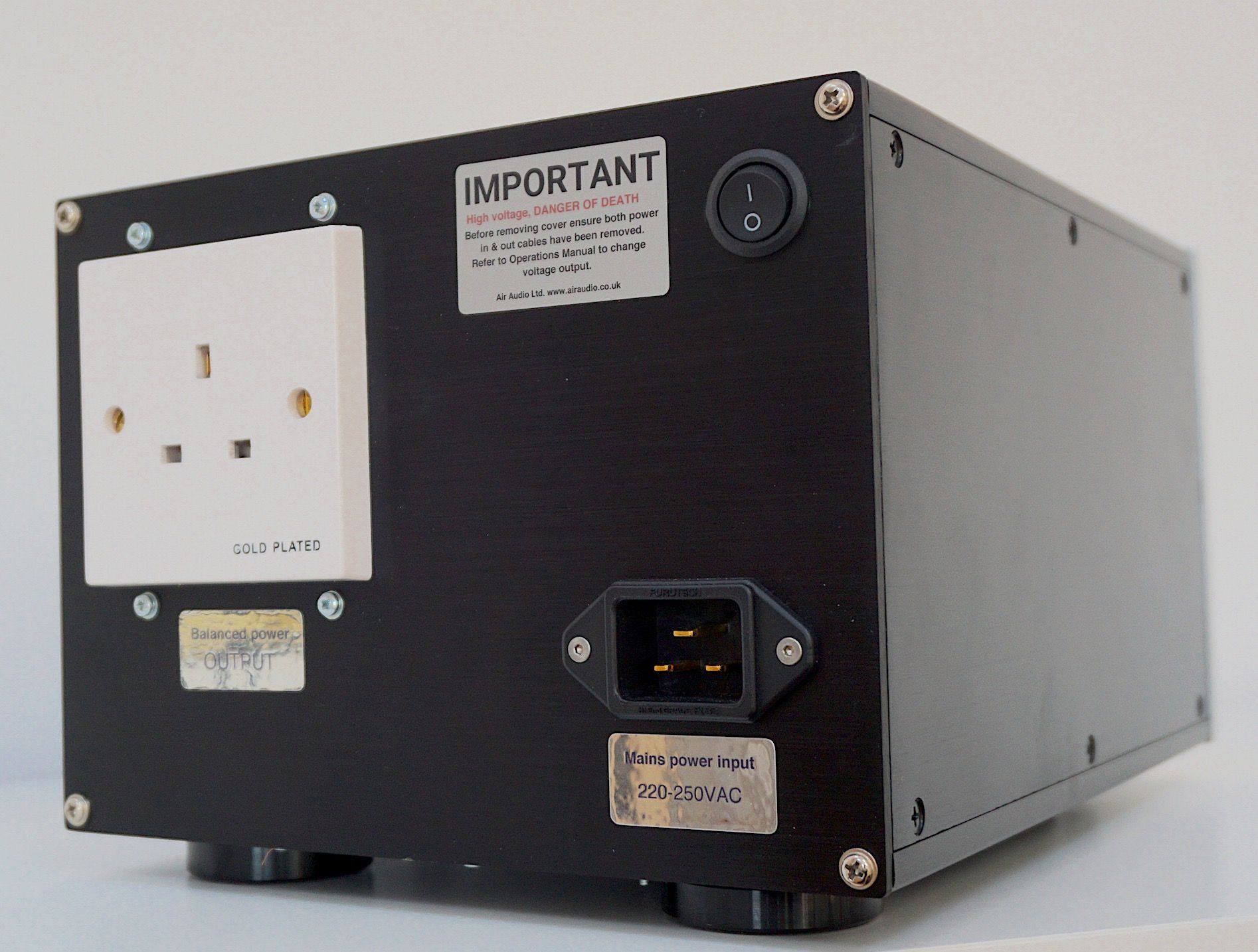
The power is supplied by a low impedance balanced output transformer with an earth-tapped secondary, the transformer core is, says the company, “…run at reduced flux density, is impregnated with varnish and the centre hole filled with resin and supported on an anti-vibration platform to reduce mechanical buzz. It’s then isolated within a 4mm this aluminium case. With further damping bonded to the casework.”
This configuration produces an output voltage consisting of symmetrical pairs of identical but out-of-phase voltages. The reduced noise floor is there because, at the central earth point, these equal and opposite currents meet and cancel each other out, “…they are not superimposed on the earth.” This is known as common-mode rejection.
When you plug your power block into the AC-2K, Air Audio recommends you use a star-wired distribution block but you can use whatever you have to hand. The AC-2K can handle blocks with integral RF/EMI or other passive noise control electronics included within.
Make sure you place the AC-2K is a well ventilated area because there is a small amount of heat emanating from this box. It’s not a big deal, there’s not a a lot of heat but there’s a little which might, over a long time, cause issues so allow for 25mm of space around the unit.
I was intrigued to hear that the AC-2K doesn’t use a 13A IEC socket but a 16A IEC.
As I say, the AC-2K is operated an ‘always on’ position but there is a power switch on the rear of the chassis. This switch operates the voltage display seen on the front of the chassis. This switched display shows the balanced voltage output.
Air Audio does say that if your supply ranges over 253VAC or less than 207VAC then you may wish to re-set the transformer, there’s three settings available. I would talk to Air Audio about this. Do not open the chassis yourself. The unit does arrive with a two year guarantee, incidentally.

Spanning 180 x 230 x 330mm, the dense yet compact chassis weighs 16kg.
So how does the AC-2K perform? I decided to split the initial test to see how the unit affected the source components first. Then switched that over to see how the AC-2K dealt with the power units and powered electrostatic speakers only, then connected all of my hi-fi as one unit. Just to see which area of my hi-fi was most affected, if any.
SOUND QUALITY
I began with a vinyl version of Greenslade’s proggy Time and Tide, on WEA from 1975. I first plugged my front-end components into a power block and fed that into the AC-2K. I’m talking turntable and CD player, phono amp and pre amp here.
Ok, there’s a lot to report here so let’s get to it. Firstly, I was impressed by the tonal balance. There was a host of bass here that I was not normally used to hearing on this track. This provided a weight to the bottom end of this track that added a new foundation to the music but it also acted as a driving force. Hence pace seemed to pick up here. Another reason for the increase in pace was the focus which was honed and tight. Bass was mobile and fleet of foot. Its rather nimble action meant that it sped along but jabbed its way right through the track, like a young Cassis Clay (as was), moving, jabbing, landing punches and then was gone before the source could be located. There was a sense of bass movement here as opposed to a basic big bass bottom.
This gave the music a greater sense of action. The bass here seemed just as active as the upper mids and the treble.
As for the noise floor? That took a dive downwards which was revealed well during the later female backing harmony vocals. The reverb tails emanating from this sequence and the space around them in and around the soundstage seemed to grow.
Transient performance was also notable for its performance and was effective during cymbal hits. The action of that initial hit, not the fragile after effects (although they were impressive too) but the actual hit, the actual moment of the strike, the drumstick hitting metal seemed more significant now. This moment had a greater effect. There almost seemed to be more effort placed into this action now.
Turing to the CD version of Morgana King’s 1973 Paramount album, New Beginnings… and the track Like a Seed that featured a rather funkified, jazzified, hippified, orchestral backing plus harmony backing vocals, I was better able to hear the child’s chant during play at the beginning. The new found precision allowed the diction to better protect itself to the ear.
Strings also provided a more sweeping, richer tone while the acoustic guitar strums on the left channel offered a new found delicacy that spoke of a group of strings flying in close formation.
The bongos’ intriguing mix of dead skin thwack with a slight reverb tail was projected well on the right channel. The low noise added character to this instrument. The lead vocal was also now able to slightly distance itself from the backing orchestra, allowing it to infuse more emotion in its performance.
I then swopped over, using the AC-2K to power my monoblock power amps and electrostatic speakers.
I played both the rock and the vocal jazz tracks, one after another. What did I hear? In a word, ‘weight’. Lots of bass weight. The lower end frequency presence was enhanced here. Again, the removal of excess noise allowed the remaining frequencies to come forward to the ear and here, in this section of my hi-fi, that meant raw and unadulterated power. Power and that bass heft. The sense of gravity was obvious now. The confidence was also enhanced here too. The music felt sure of itself and better able to do its thing. It was a joy to hear it strut, actually. Even the jazz track, one that moved towards analytical accuracy, felt more secure and definite in its movements.
Finally, I wanted both the front end and the power section to run off the AC-2K. So I trailed one power block off another in serial fashion (a recommended action) then the end was plugged into the AC-2K itself. So now my entire hi-fi was running of the box.
The result? As you might surmise from the move account, a combination of detail and power. A combination of presence and confidence with clarity and transparency. Tonal balance but also mobility and finesse.
CONCLUSION
What I liked about the AC-2K was that, firstly, it improved the entire frequency spectrum with one flick of the mains switch. Everything was enhanced, from top to bottom. Everything. There were no trade offs here, only positives.
Secondly, the inclusion of the AC-2K was tantamount to a major component upgrade because, well, that’s exactly what it is. It’s feeding the entire hi-fi system with low noise, cleaned-up power.
Grab yourself an AC-2K and, in my book, that will be money well spent.
AC-2K BALANCED POWER TRANSFORMER Price: £1,495 (This product arrives with a 30-day money back guarantee and can be bought direct from Air Audio)
Web: www.airaudio.co.uk
Tel: 01491 629629
GOOD: low noise floor, bass presence, tonal balance, treble confidence, midband clarity
BAD: nothing
RATING: 9
[Don’t forget to check out my new Patreon Page at www.patreon.com/audiophileman, for exclusive postings, giveaways and more!]
REFERENCE
Origin Live Sovereign turntable
Origin Live Enterprise 12″ arm
Icon PS3 phono amplifier
Aesthetix Calypso pre-amp
Blue Horizon Professional Rack System
Harmonic Resolution Systems Noise Reduction Components
Gutwire Consummate Grounding Cable
All vinyl was cleaned using an Audio Desk’s Ultrasonic Pro Vinyl Cleaner

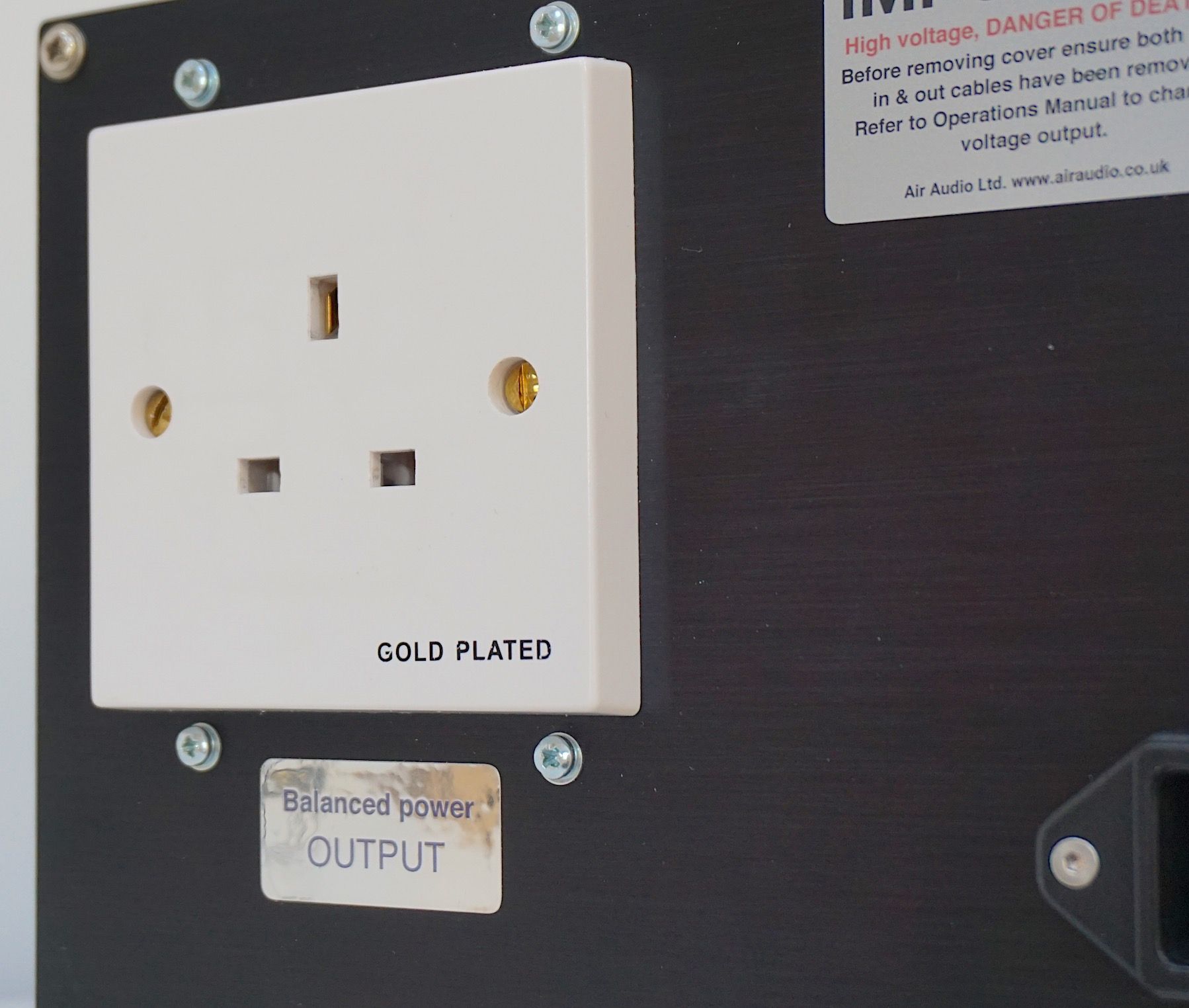
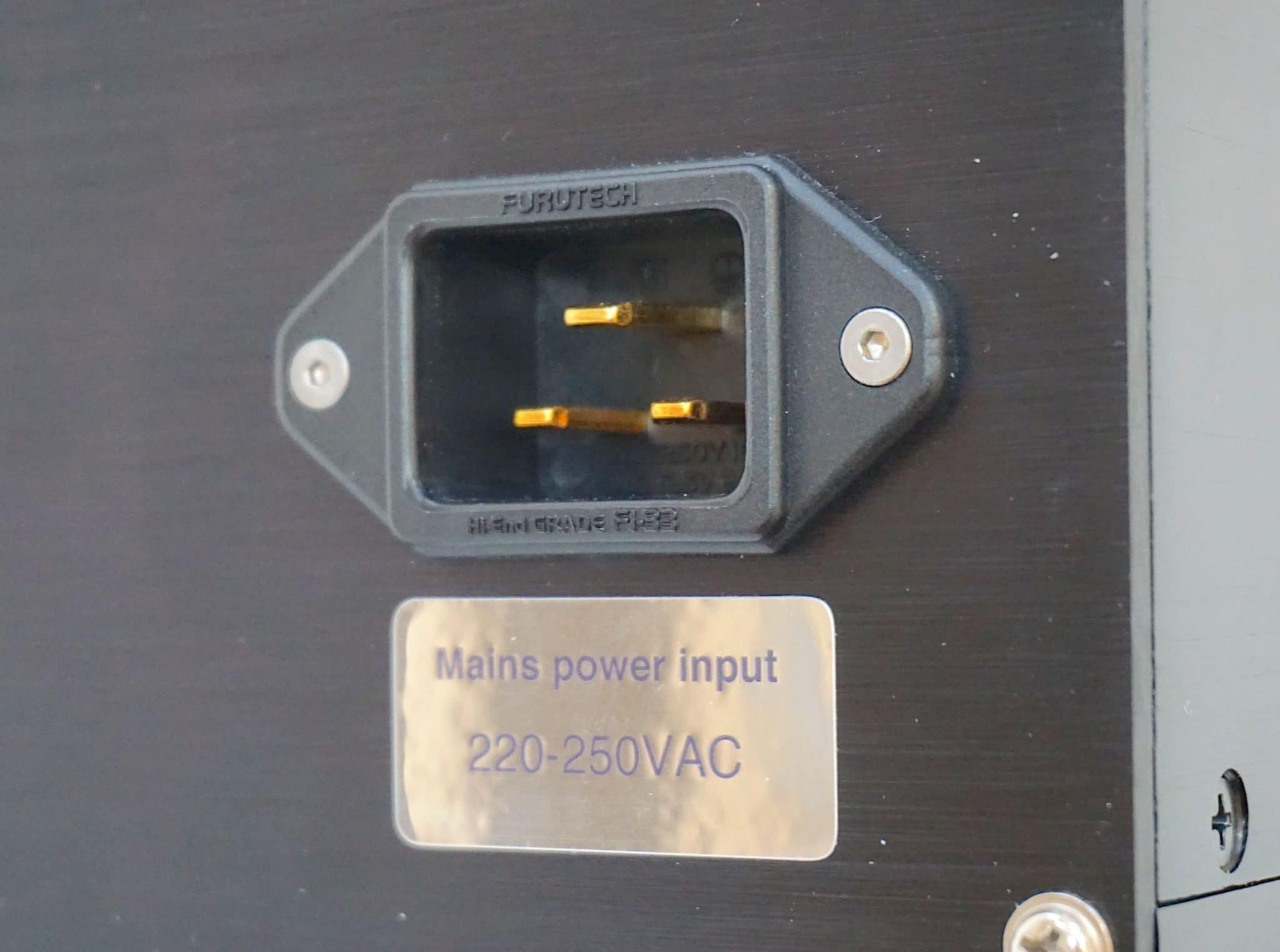
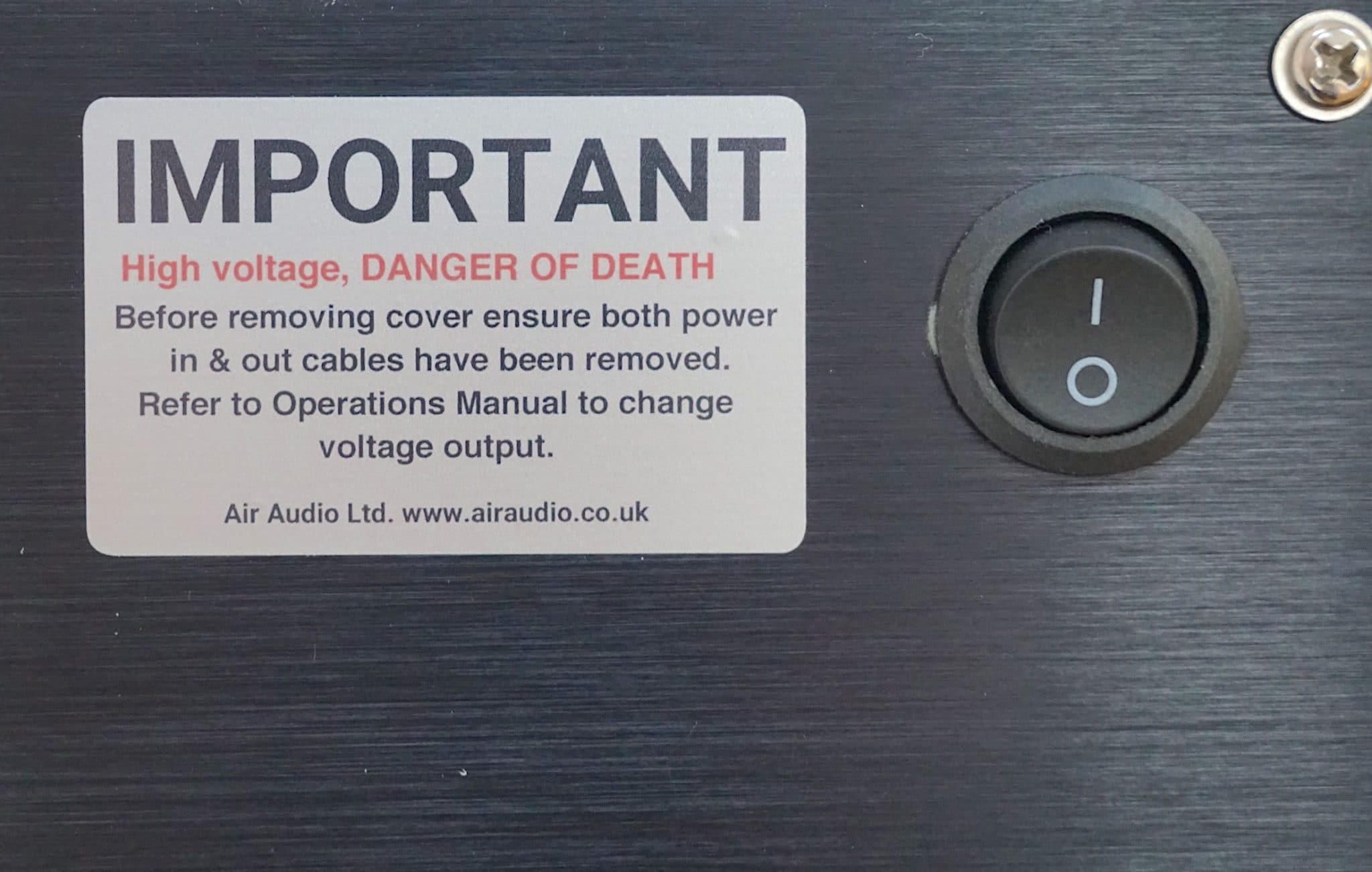
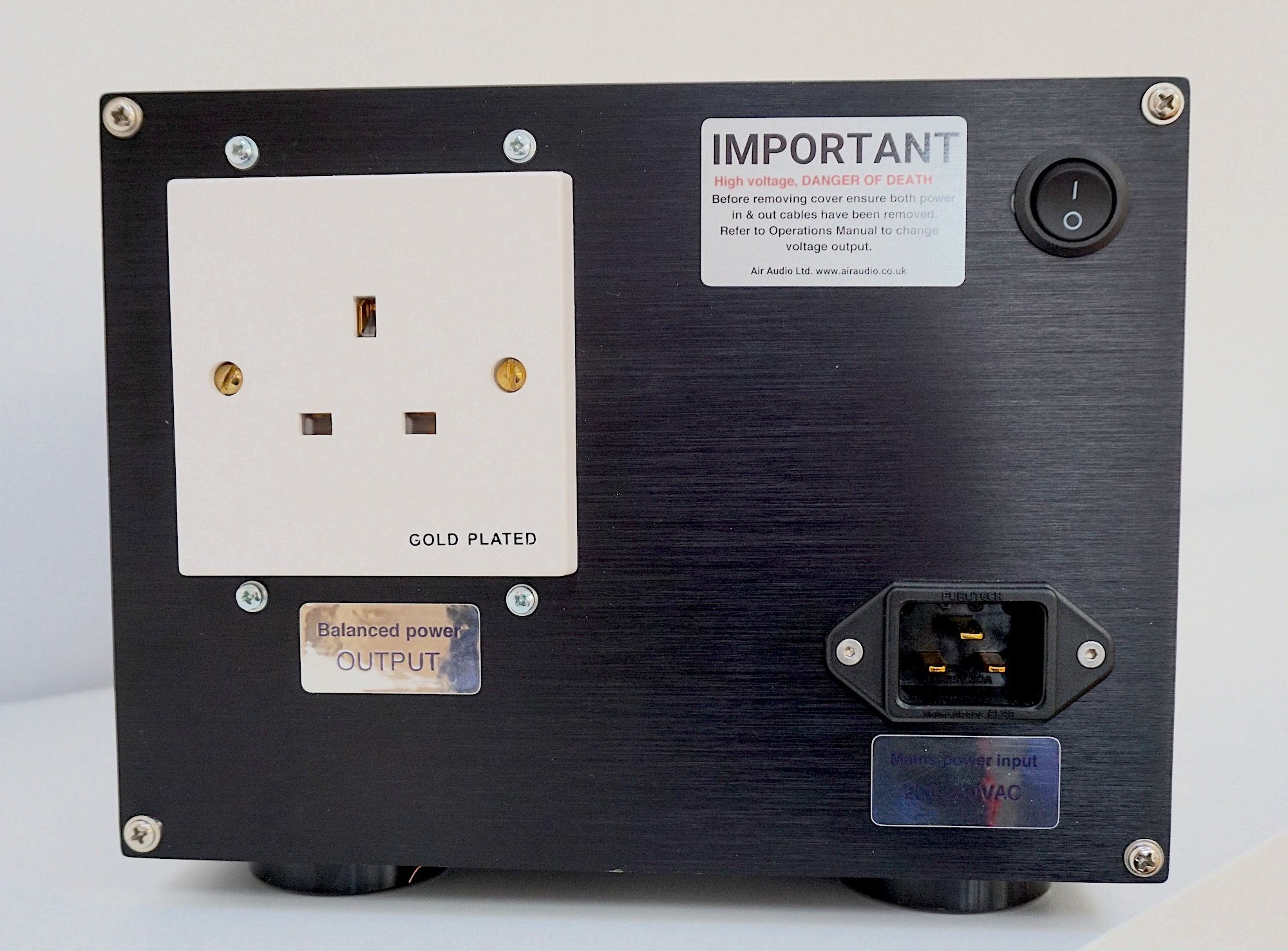
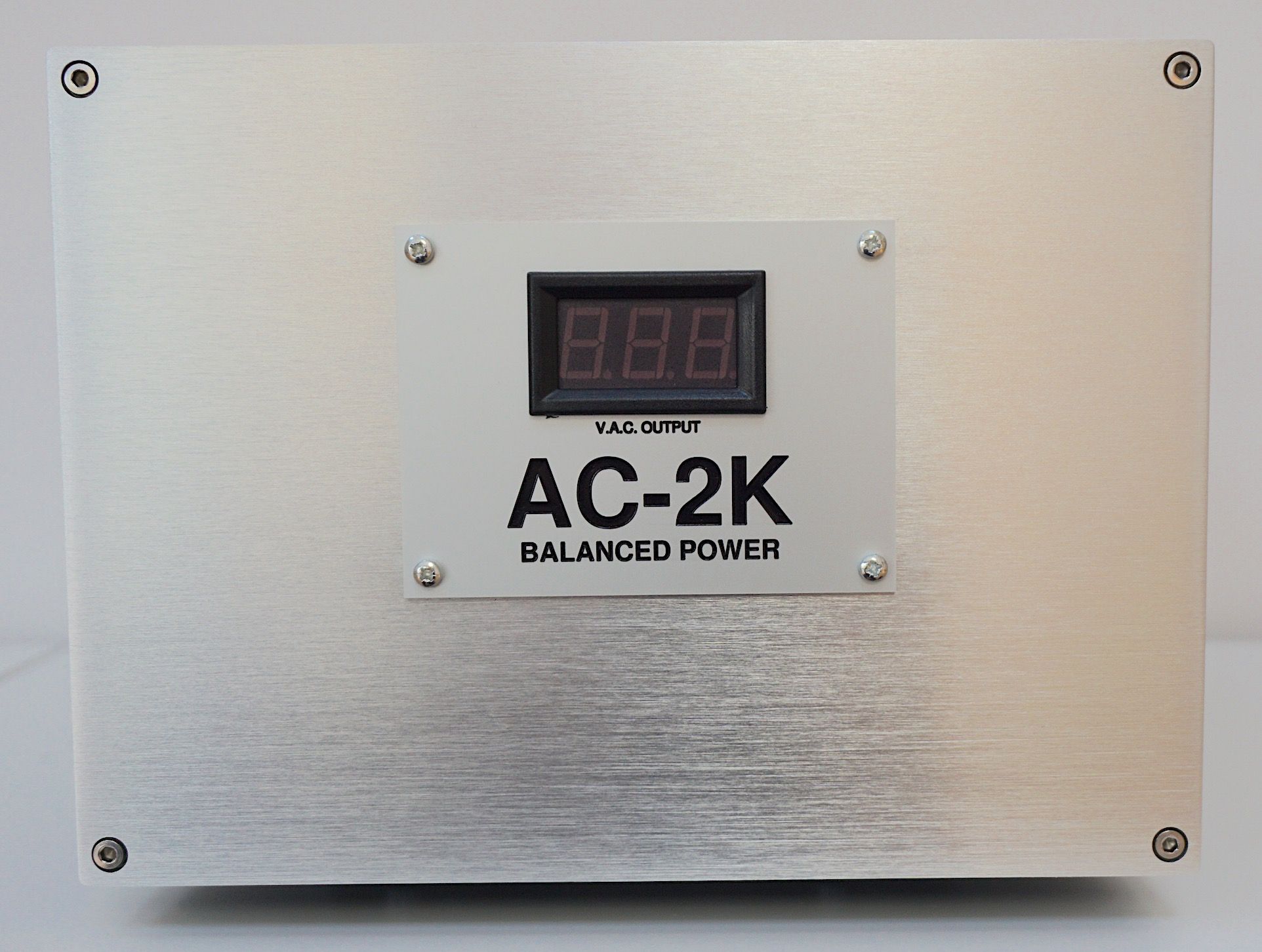
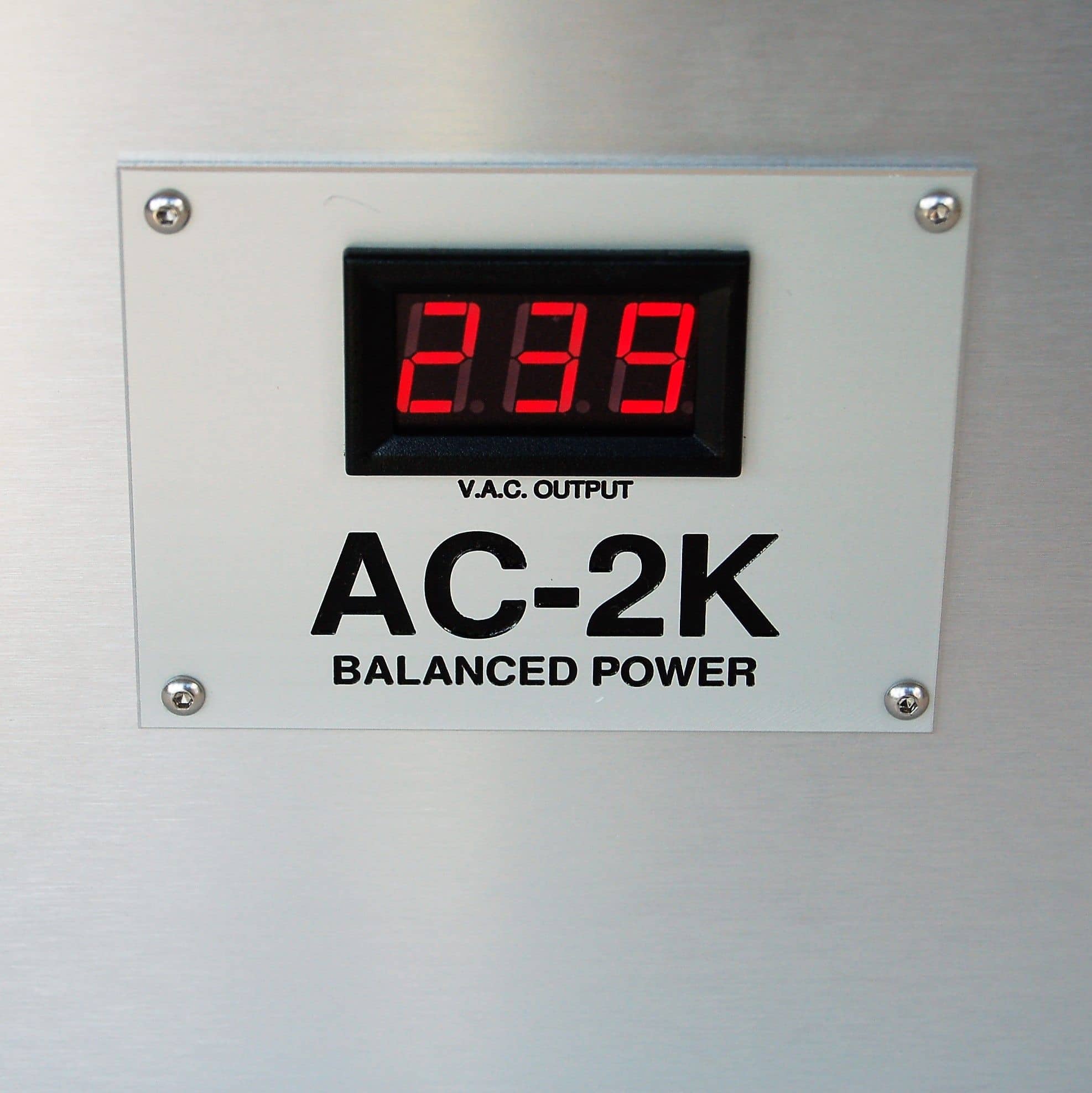
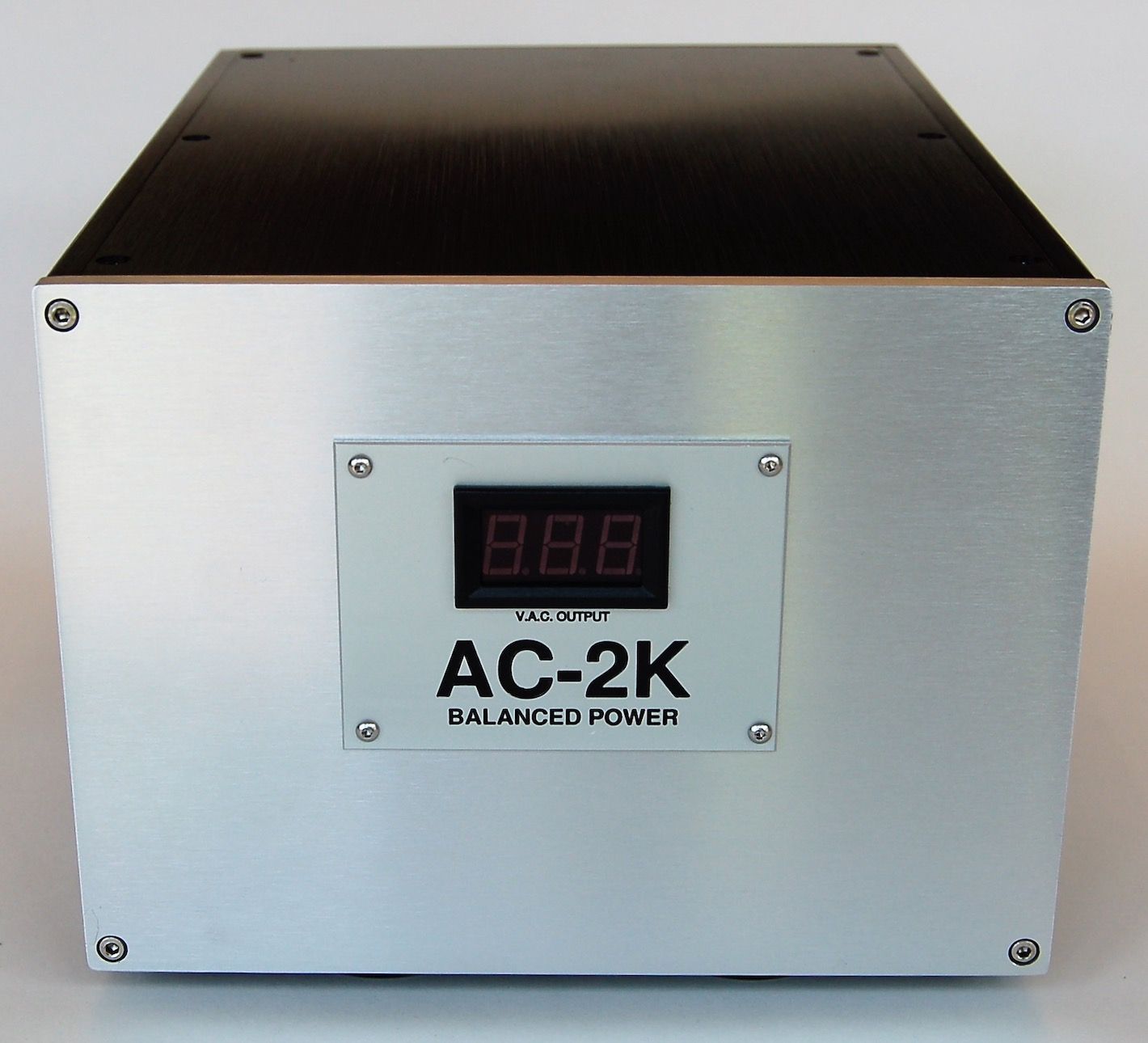
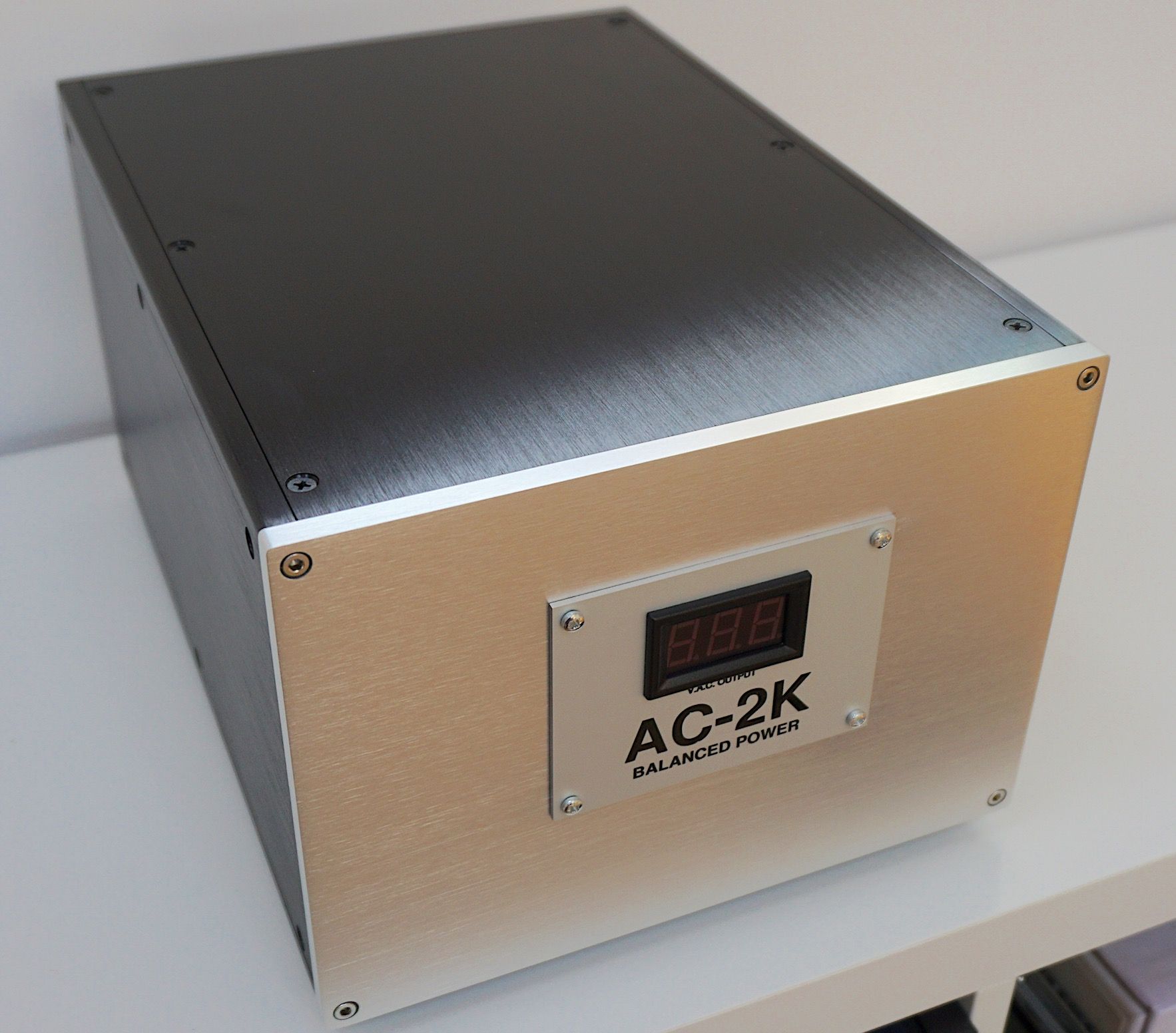



I am interested to know how you think this compares to the ISOL-8 device which you previously reviewed. I am looking at two alternative options for my source components. The 1st is a balanced device such as the AC-2K connected to a high quality mains block, with the block’s grounding post attached to a grounding system such as a CAD GC1. The 2nd is using a device such as the ISOL-8 with the ISOL 8’s grounding post attached to a grounding system such as a CAD GC1. Any thoughts would be welcome.
Hi Peter – it doesn’t compare but I know what you mean and what you’re getting at 🙂 Even so, let’s remember, the ISOL-8 is a power conditioner. The AC-2K is not. So it’s a bit chalk and cheese, really. The latter is a balanced transformer. It acts like a power supply but is wired in such a way as to reduce noise. It’s a power supply on steroids, in effect. The ISOL-8 is not a power supply. It takes a power signal from something else and then tries to purify that signal. So what am I getting at here? Well, the balanced power supply doesn’t *process* the sound, it just guides it, without the power signal being man-handled. An active power conditioner is more intrusive and it can intefere with dynamics, although the ISOL-8 is one of the best conditioners out there. Hence, I would look at balanced with *passive* noise suppression, which is less intrusive to sound. The CAD gear is perfect for that.